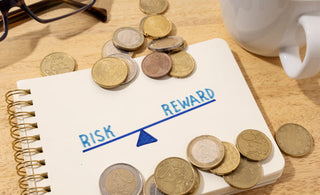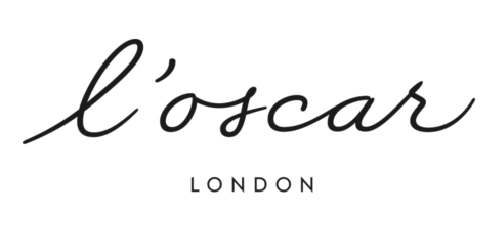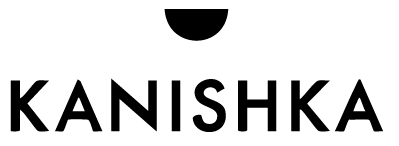
Investing very rarely comes without risk - regardless of the type of investment, whether it be art investment or government bonds, you take on a small risk to earn rewards. But how much risk should you take on? This is where the risk/reward calculation becomes useful.
The risk-reward calculation can be a safety net when investing, helping to ensure you don’t lose any money you can’t afford to lose when selecting the best investments for you. But what exactly is risk vs reward? That’s what we’ll be exploring today. In this blog, we will explore:
- What risk is in investments
- How to determine risk when investing
- How to calculate risk vs reward
- An example of risk/reward in action
Understanding Risk in Investments
Before we delve into risk vs reward, let’s explore what risk actually involves. Knowing the risks associated with your investment is a key part of any investment strategy, but you can interpret risk in several ways.
For some, ‘risk’ may mean achieving lower returns than expected, but for others, it could mean experiencing a loss. It’s important to note that the nature of investing means there will pretty much always be some element of risk. So, risk in investments could mean:
- Being unable to convert your investments to cash to meet financial obligations
- Losing value in your investments due to economic conditions (e.g a stock market crash)
- Being unable to beat inflation - e.g if your payouts are based on fixed interest rates
How to Determine Risk When Investing
There are several factors to consider when determining your risk tolerance. As we’ve established, your risk tolerance is personal to you and your financial goals.
How Does Risk Make You Feel?
First of all, consider how the risk makes you feel - does it make you feel anxious? Or are you okay taking on risk? Do you think the risk will be worth it for higher returns? Will you be disappointed by your returns if you don’t take on enough risk? Really consider these questions to determine the level of risk you’re comfortable with.
How Much Risk Can You Afford to Lose?
Next, consider the amount of risk you’re physically capable of losing. The key goal of investing is to make profit and meet your financial goals. However, the more risk you accept, the more you accept that your investment could decrease in value. Consider what this means for your financial situation before allocating your assets.
How Long Are You Willing To Wait?
The general rule of thumb is that the longer you wait, the lower the risk. This is because over a long period of time, market trends often even out, and you can weather fluctuations and economic uncertainty.
Ultimately, if you have a long-term outlook, you may be able to take on higher levels of risk. Consider the reason you’re investing - are you investing for retirement? Or are you trying to meet a short-term financial goal? Consider your time horizon and the level of risk you’re willing to take.
Are You New to The Investment Scene?
If you’re not an experienced investor, chances are, you’re more cautious about taking risks. If you don’t have the knowledge, you should consider choosing safer options.
However, if you’re a seasoned investor with lots of knowledge about investments and financial markets, then you may be more willing to take on higher levels of risk.
Calculating Risk/Reward
To calculate the risk/reward, you simply divide your reward/ net profit by the price of your maximum risk. The formula is: risk/return radio = potential loss/ potential gain Now you have this formula, you can begin to incorporate it into your investment planning strategy. For example, you could:- Pick an appropriate stock for you
- Set targets based on the price of the stock
- Use the formula above to determine the risk/reward ratio
- If it is below the number you have established, then amend your investment until you have an acceptable ratio - or find an alternative asset that better matches your risk tolerance
This ratio can help you to determine whether an investment is worth it. If you have a low ratio, then the reward is better than the risk. However, a high ratio means the risk is greater than the reward.
Example of Risk/Reward in Action
So, let’s put this ratio into practice. You have £1,000 to invest, and you’re deciding between two different stocks (let’s call them stock A and stock B). Stock A is a well-established company that has a long history of growth - and it’s predicted to have a 5% return over the span of a year. Due to its stability, the potential loss is around 2% - which is low risk. The risk/reward ratio for this stock would be 2:5 - which means that every 2% of potential loss, you could gain 5%.
Stock B, however, is a tech startup. It has high growth potential, but also high risk. It could give you a 20% return in a year (providing things go well!). However, if it doesn’t go as expected, you could lose 15% of your investment. The risk/reward ratio here would be 15:20 - which means that every 3% of potential loss, you could gain 4%.
So, Stock B offers a higher potential reward, but comes with more risk. Stock A offers a lower reward but comes with minimal risk. The right choice for you depends on your risk tolerance - you may prefer the stability of Stock A, or the higher potential returns of Stock B.
Risk vs Reward and Art Investment
Art can be a great investment - it can act as a hedge against inflation, be a great way to diversify your portfolio, and potentially generate significant returns. However, the art market can be unpredictable. Prices for artworks can fluctuate based on factors such as:- Art trends
- The artist's popularity
- Economic conditions
Some art pieces may appreciate significantly, but others may not - and some may even decrease in value. We recommend working with an art advisor to determine the right choice for you and your risk tolerance. If you’re risk-averse, opt for blue-chip artwork.
Much like blue-chip stocks, blue-chip artwork refers to art with a history of growth. Alternatively, if you have a higher risk tolerance, consider investing in art from up-and-coming artists - you could reap significant rewards, but it comes with a higher level of risk.
To determine the risk/reward ratio, estimate the future selling price. Subtract the amount you will pay for it from the future selling price. For example, if you bought it for £10,000 and expect to sell it for £15,000, the potential reward would be £5,000. Then determine the potential risk.
Consider the lowest price you may have to sell it for, and consider other costs such as insurance and transaction fees. If you may have to sell your piece of art for £5,000 further down the line, the risk would be £5,000. Then use the risk/reward formula to determine your ratio!
Key Takeaways
- You can calculate risk vs reward ratio by using this formula: risk/return radio = potential loss/ potential gain
- Consider your risk tolerance, time horizon, your financial situation and your level of experience
- Work with a financial expert to manage risk
- If your risk/reward is below your ideal number and you’re unable to make it work, try a different investment






